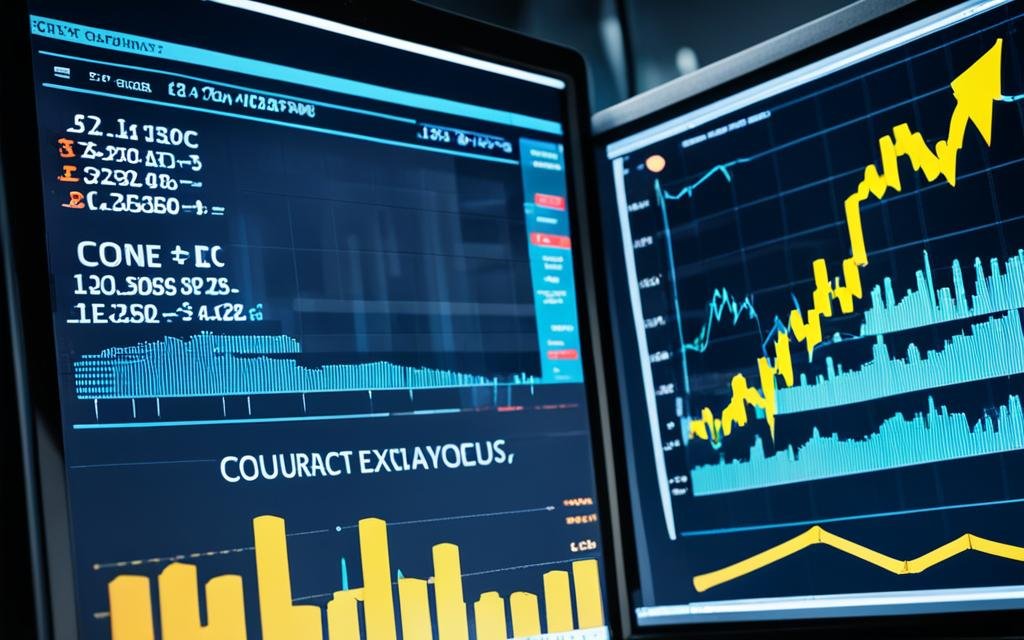Welcome to our comprehensive guide to profitable forex trading strategies. Whether you’re a beginner or an experienced trader, mastering the right strategies is essential for maximizing your profit potential in the dynamic forex market.
In this article, you will discover a wide range of effective forex trading strategies that have been proven successful by traders worldwide. From understanding the basics to implementing risk management techniques, we’ll cover all the essential elements you need to know for developing a profitable trading plan.
Now, let’s dive deeper into the world of forex trading strategies and equip yourself with the knowledge and skills needed to succeed.
Understanding Forex Trading Strategies
In this section, we will delve into the fundamentals of forex trading strategies. Forex trading strategies are essential tools for traders to navigate the dynamic currency markets effectively. By understanding these strategies, you can make informed decisions and develop a personalized trading approach that aligns with your goals and risk tolerance.
Forex trading strategies refer to a set of rules and techniques used by traders to determine when to enter or exit trades, manage risks, and maximize profit potential. These strategies are based on various factors such as technical analysis, fundamental analysis, market sentiment, and risk management principles.
Why are forex trading strategies important? The forex market is highly volatile and can be influenced by numerous factors, including geopolitical events, economic indicators, and central bank policies. Having a well-defined strategy helps traders navigate these complexities and make rational decisions based on proven methodologies.
Understanding different types of forex trading strategies is crucial. Some popular strategies include trend following, breakout trading, range trading, and scalping. Each strategy has its own characteristics, risk profile, and time horizon. By familiarizing yourself with these strategies, you can choose the ones that suit your trading style and preferences.
Key Forex Trading Strategies
In this section, we will explore some of the most effective forex trading strategies that have proven to be successful for traders worldwide. These key forex trading strategies are essential tools for navigating the dynamic currency markets and maximizing your profit potential.
One popular strategy is swing trading, which involves taking advantage of short-term price fluctuations within an overall market trend. Traders who employ this strategy aim to capture smaller price movements over a few days or weeks.
Trend following is another commonly used strategy, where traders identify and ride the momentum of a prevailing market trend. By entering trades in the direction of the trend, traders can potentially profit from significant market moves.
Breakout strategies involve identifying price levels at which the market is likely to experience a breakout from a consolidating range. Traders who utilize breakout strategies seek to enter positions when the price breaks above a resistance level or below a support level.
Carry trading is a strategy that takes advantage of interest rate differentials between currencies. Traders who engage in carry trading buy a currency with a higher interest rate while simultaneously selling a currency with a lower interest rate to profit from the interest rate differential.
Each of these key forex trading strategies has its unique characteristics, benefits, and risk factors. Understanding when and how to implement these strategies is crucial for successful trading. By incorporating these strategies into your trading repertoire, you can enhance your decision-making process and increase your chances of generating consistent profits.
When applying these strategies, it is essential to thoroughly analyze the market conditions, use appropriate risk management techniques, and continuously monitor the performance of your trades. Remember that forex trading involves risks, and it is important to develop a trading plan that suits your risk tolerance and financial goals.
Risk Management in Forex Trading
Effective risk management is crucial in forex trading to protect your capital and minimize potential losses. Without proper risk management, even the most profitable trading strategies can result in significant setbacks. In this section, we will discuss various risk management techniques and tools that can help you mitigate risks and protect your trading account.
One essential risk management tool is the use of stop-loss orders. By setting a predetermined exit point for each trade, you can limit your potential losses if the market moves against your position. Stop-loss orders can be adjusted based on your risk tolerance and the volatility of the currency pair you are trading.
Position sizing is another critical component of risk management. By controlling the size of your positions relative to your account balance, you can limit the amount of capital at risk per trade. This can help prevent catastrophic losses and preserve your trading capital for future opportunities.
Furthermore, understanding risk-reward ratios is essential. By assessing the potential reward in relation to the risk, you can evaluate whether a trade offers a favorable risk-reward profile. A positive risk-reward ratio means that the potential reward outweighs the potential risk, making the trade more attractive.
Implementing sound risk management strategies can enhance your overall trading performance and help you maintain long-term profitability. By combining these techniques with your trading strategies, you can minimize the impact of market fluctuations and create a more sustainable trading approach.
Developing Your Forex Trading Plan
A well-defined trading plan is essential for success in the forex market. In this section, we will guide you through the process of developing a personalized trading plan that aligns with your goals, risk tolerance, and trading style. By following a solid trading plan, you can enhance your decision-making process and increase your chances of achieving consistent profits.
Developing your forex trading plan starts with defining your trading objectives. What do you want to achieve in the forex market? Are you looking for short-term gains or long-term growth? Clearly outlining your goals will help you stay focused and motivated.
Once you have established your objectives, it is important to set realistic expectations. Understand that forex trading is not a get-rich-quick scheme. It requires time, effort, and continuous learning. Setting achievable goals will prevent you from getting discouraged and help you maintain a long-term perspective.
Another crucial element of your trading plan is creating a disciplined approach to executing your trades. This involves developing a set of rules that govern your trading activities. For example, you may decide to follow a specific risk management strategy, such as using stop-loss orders to limit potential losses. By adhering to these trading rules, you can minimize emotional decision-making and maintain consistency in your trading approach.
Remember to regularly review and update your trading plan as needed. The forex market is dynamic, and market conditions can change. Your trading plan should be adaptable to these changes. By analyzing your trading performance and making necessary adjustments, you can refine your strategies and improve your trading results.
Testing and Refining Your Strategies
Once you have identified and developed your preferred forex trading strategies, it is important to test and refine them to ensure their effectiveness. Testing and refining strategies play a critical role in optimizing your approach and maximizing your profit potential. In this section, we will discuss the importance of testing and refining your strategies and provide you with valuable insights to enhance your trading performance.
One of the key methods for testing your strategies is through backtesting. Backtesting allows you to assess the performance of your strategies using historical market data. By simulating trades based on your strategy rules and analyzing the results, you can gain valuable insights into its strengths, weaknesses, and overall profitability. This process helps you identify any flaws or inconsistencies and make the necessary adjustments to improve your strategy.
Another important approach is forward testing. While backtesting provides insights using historical data, forward testing allows you to validate your strategy’s effectiveness in real-time market conditions. By executing trades based on your strategy in a demo or live trading account, you can assess its performance and adapt it to current market trends, volatility, and liquidity. Forward testing enables you to fine-tune your strategy and gain confidence in its potential success.
During the testing and refining process, it is crucial to analyze the results and make adjustments accordingly. Evaluate the performance metrics of your strategies such as win rate, profit factor, and risk-reward ratio to identify areas for improvement. By closely monitoring and comparing the results, you can determine which aspects of your strategies need refinement and optimization. Consider modifying entry and exit criteria, adjusting position sizes, or implementing additional filters to enhance your strategy’s performance.
Remember, testing and refinement should be an ongoing process. The forex market is dynamic, and what works today may not work tomorrow. As market conditions change, it is important to continually test and refine your strategies to ensure their adaptability. Stay updated with market trends and news, as well as the latest developments in trading technology and tools. Keep refining your strategies to align them with the evolving market conditions and stay ahead of the competition.
Continual Learning and Improvement
In the fast-paced and ever-changing world of forex trading, continual learning and improvement are key to achieving long-term success. By staying updated with the latest trends, techniques, and market insights, you can adapt to market dynamics effectively and refine your trading skills.
To further your education in forex trading, consider reading recommended books written by industry experts. These books can provide valuable insights and practical strategies that you can incorporate into your trading approach. Additionally, staying connected with industry news and educational resources, such as reputable financial websites and trading forums, can keep you informed about market developments and provide opportunities for learning from experienced traders.
An essential mindset for continual learning and improvement is embracing a growth mindset. This mindset encourages you to see challenges and setbacks as opportunities for growth and development. It motivates you to seek knowledge, experiment with new strategies, and learn from both successes and failures. By committing to ongoing learning and embracing a growth mindset, you can continually improve your trading abilities and navigate the forex market with confidence.


